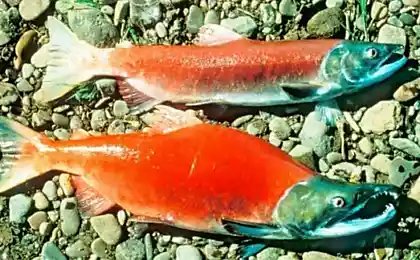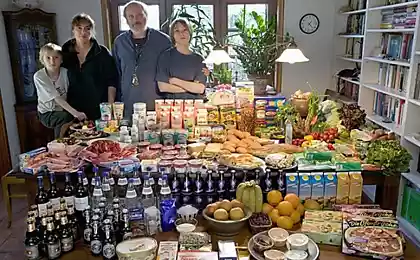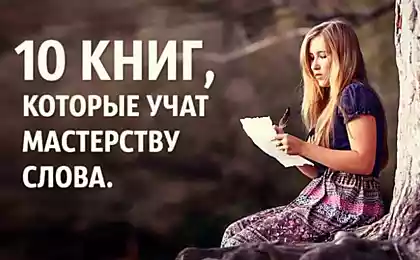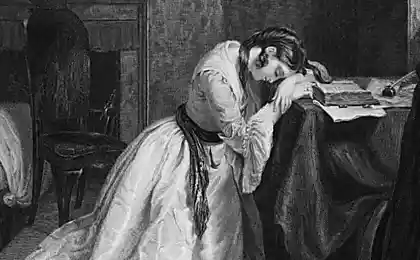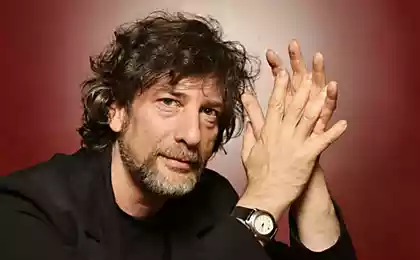650
They have to write on the label?
When you buy products at the store, how often do you look at labels? As a rule, most of us don't have time to read the information, fine print, and we choose the products of famous brands, which are seen in ads or heard from friends.
Manufacturers use our lack of time and negligence. Composition write unreadable font, "forget" to tell us about preservatives, dyes and other food additives, is placed on the label of beautiful promotional pictures for the product have no relationship. And we end up buying yogurt-strawberry without the strawberry "fruit muesli" without fruit "beef sausages" without beef.
To protect consumers, was developed labeling requirements for all products. Previously, they were listed in the state Standards, now in the technical regulations not only in our country but throughout the whole territory of the Customs Union.
Thus, the mandatory labelling requirements that all manufacturers must abide by, all consumers to know.

Mandatory label elements the labelling of any product must be specified:
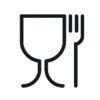
On the packaging of any food product must be the sign denoting that the material from which it is made, suitable for food products.

Also needs to be information from which material made the package, usually it is also provided in the form of icons.
Additionally (but not necessarily) can be specified information about the document, according to which the manufactured products (GOST, TU), coined name, trademark, information about the owner of the trademark, place of origin of the product, name and place of business of the licensor, the marks of voluntary certification systems.
The name of the technical regulations, the product must reliably characterize it, is that you clearly understand that before you milk, yogurt or kefir, for example.
Do not confuse the name and the product name.
Invented name can be anything: "chicken home", for example. The name should be clear: the "semi chopped, molded, breaded meat in broiler chickens".
In name, you cannot specify the components that are not part of the product. For example, if the yogurt instead of strawberry flavor, it is impossible to call the product "yogurt with strawberries." Only "yogurt with strawberry flavor" or "yogurt with strawberry flavor".
On the label of meat products is necessary to write, chilled, or frozen, but if it is made from meat that was once frozen, the obligatory inscription "manufactured from frozen raw materials".
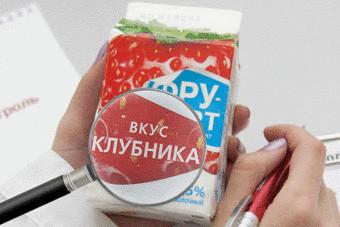
Drink "frugurt" with strawberry flavor — examination of RoskontrolCompositioningredients are listed in descending order of their mass fraction. That is, for example, if the sausage in the first place provided the beef, then the composition must be of the most is beef and not chicken or soy.
If any of the ingredients in the product not more than 2%, they can be specified after each of the major components in any order.
Fruits, berries, vegetables, nuts, cereals, mushrooms, herbs, spices that comprise the respective mixture and not significantly different mass fraction may be entered in the composition of food products in any order, but mandatory inscription of "in changeable proportions".
The composition may be omitted from fresh fruits, berries and vegetables, vinegar from a single raw material, one-component food products, the name of which allows to establish the presence of this component (e.g., eggs or flour).
In the presence of a composite component, the label indicates a list of all its ingredients, or specified component with the addition in brackets of ingredients in descending order of their mass fraction. For example, the composition of glazed curd cheeses: cottage cheese, sugar, dark chocolate (cocoa mass, sugar, cocoa butter, emulsifier- soya lecithin, natural vanilla), butter.
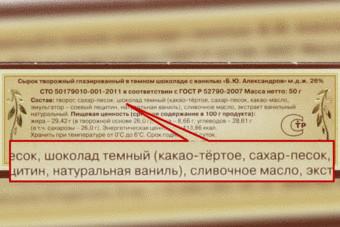
Label curd cheese "B. Y. Alexandrov"sure, and it is not necessary to specify the compositionmust be indicated in the composition are present in any quantity:

Bread Harry's American Sandwich — examination of RoskontrolNot listed in the composition:
It is allowed to omit the marking of the preservative sulphur dioxide at its content in food products is not more than 10 mg/kg(l).
Flavors flavor Name must contain the word "flavouring" ("flavoring substance" or "flavoring preparation" or "smoke flavouring" or "thermal technological flavoring" or "flavoring precursor");
The name of the flavor may be amended with the words "natural", but only if a flavoring contains only flavoring preparations and (or) natural flavoring substances produced from natural source materials.
Special labels and warnings There are several food additives, the presence of which in the product should have to warn consumers:
Pictures Manufacturers products are often placed, for example, the label of mayonnaise salad photo on the label of the ketchup — photo of shish kebab, a box of pasta — picture of the finished dish with tomatoes and herbs. To do so, but only if the product is actually used in the preparation of this dish, and if the label is the inscription "the option of a cooked dish", "serving", or similar.
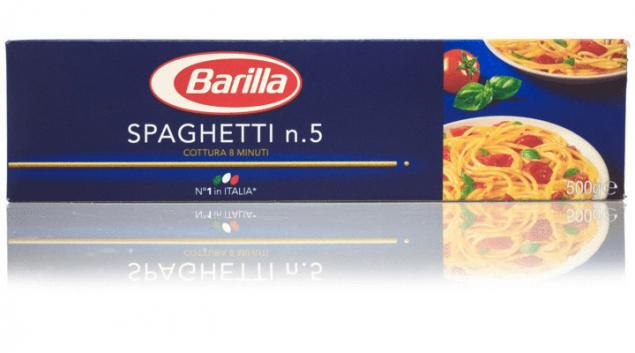
If instead of any component used a flavoring (as in the same yogurt with strawberries) to represent the corresponding component is also allowed.
The number can be specified in liters (ml), grams (kg), or in pieces. Weight or volume eggs and fruits, vegetables sold by the piece, can be omitted.
If the product is placed in a liquid medium, the label must be specified and the net weight of the product liquid, and the mass of the product. For example, the mozzarella cheese in water or brine. The label indicates the number of balls of cheese weight each and total weight of the product along with the liquid.
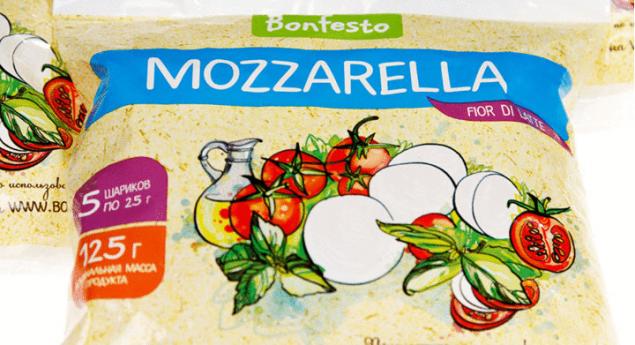
Date of manufacture and shelf life date of manufacture should be indicated in the format HH.DD.MM, if the shelf life of the product up to 72 hours (so the dates on the labels of bread, cheese); DD.MM.YYYY, if the shelf life is from 72 hours to 3 months; MM.YYYY in the expiration date of 3 months or more; YYYY — sugar.
The expiration date is specified in the same format in the form of the inscription "best before" or with an indication of shelf life, respectively, in hours, days, months, years.
The manufacturer If the manufacturing is located in one place, and the company is officially registered in another, you need to include both addresses.
For the import of goods necessary to specify the name and location of importer. The name and address of the manufacturer can write in the language of the country of origin, only the country name you must write in Russian.
If the product is the same brand manufactured in different occupations, must use letters, numbers, symbols, selections in a different font to clearly identify where the product is manufactured.
Nutritional valueEnergy value shall be indicated in kilocalories (kcal) and kilojoules (kJ). In this case, the packaging of the yogurt maker only specify the value in kilocalories.
Proteins, fats, carbohydrates, minerals and vitamins are specified in grams (mg, mcg) per 100 g (or 100 ml).

Yogurt "Ostankino" — examination of Roskontrol If the contents of proteins, fats or carbohydrates in the product is not more than 2% of the average daily requirement of an adult in these substances, their number can be omitted.
An indicator ofthe Lower limit specifyinga rounding Rule, the Energy value of ≥50 kcal with a value <1 indicates 1; from 1 to 5 are rounded to the nearest integer; if the value is from 5 to 100 to the nearest integer multiple of 5; if the value is >100 up to the nearest whole number, multiple of 10. Proteins ≥1.5 g if the value is <0.5 to the first decimal place after the decimal point; if value is from 0.5 to 10 up to the nearest multiple of 0.5 g; >10 to the nearest integer multiple of 1 g Fat ≥1,66 g if the value is <0.5 to the first decimal place after the decimal point; if value is from 0.5 to 10 up to the nearest multiple of 0.5 g; >10 to the nearest whole number, multiple of 1 g Carbs ≥7.3 g if the value is <0.5 to the first decimal place after the decimal point; if value is from 0.5 to 10 up to the nearest multiple of 0.5 g; >10 to the nearest integer multiple of 1 g Sugar ≥1.3 g if the value is <0.5 to the first decimal place after the decimal point; if value is from 0.5 to 10 up to the nearest multiple of 0.5 g; >10 to the nearest whole number, multiple of 1 g If the product has been added minerals or vitamins, they must be indicated on the label.
You can specify the content of mineral substances and vitamins of natural origin, if it is ≥5 % of the average daily requirement of an adult vitamin or mineral substance in 100 g or serving.
For children and other special categories of users (e.g., for diabetes) percentages (≥2% or ≥5 %) are calculated and reported based on the standards needs for this category.
Percentage of daily needs must be indicated for biologically active additives (BAA) and enriched products – the substances that they are.
For raw products and semi-finished food value is specified as is, without taking into account further preparation of this production.
The nutritional value of flavors, chewing gum, coffee, natural mineral water, bottled drinking water, food additives, food products raw (mushrooms, meat and poultry, fish, vegetables (including potatoes), fruits (including berries), salt, spices, spices, vinegar, tea may not be.
What should be marked? The marking must be:
P. S. And remember, only by changing their consumption — together we change the world! ©
Source: roscontrol.com/project/article/chto-dolgno-bit-na-etiketke/
Manufacturers use our lack of time and negligence. Composition write unreadable font, "forget" to tell us about preservatives, dyes and other food additives, is placed on the label of beautiful promotional pictures for the product have no relationship. And we end up buying yogurt-strawberry without the strawberry "fruit muesli" without fruit "beef sausages" without beef.
To protect consumers, was developed labeling requirements for all products. Previously, they were listed in the state Standards, now in the technical regulations not only in our country but throughout the whole territory of the Customs Union.
Thus, the mandatory labelling requirements that all manufacturers must abide by, all consumers to know.

Mandatory label elements the labelling of any product must be specified:
- name;
- composition;
- quantity (weight, volume);
- the date of manufacture;
- expiration date;
- storage conditions;
- the name and location of the manufacturer (and packer if available);
- recommendations and (or) restrictions on use, including in cooking;
- indicators of nutritional value.

On the packaging of any food product must be the sign denoting that the material from which it is made, suitable for food products.

Also needs to be information from which material made the package, usually it is also provided in the form of icons.
Additionally (but not necessarily) can be specified information about the document, according to which the manufactured products (GOST, TU), coined name, trademark, information about the owner of the trademark, place of origin of the product, name and place of business of the licensor, the marks of voluntary certification systems.
The name of the technical regulations, the product must reliably characterize it, is that you clearly understand that before you milk, yogurt or kefir, for example.
Do not confuse the name and the product name.
Invented name can be anything: "chicken home", for example. The name should be clear: the "semi chopped, molded, breaded meat in broiler chickens".
In name, you cannot specify the components that are not part of the product. For example, if the yogurt instead of strawberry flavor, it is impossible to call the product "yogurt with strawberries." Only "yogurt with strawberry flavor" or "yogurt with strawberry flavor".
On the label of meat products is necessary to write, chilled, or frozen, but if it is made from meat that was once frozen, the obligatory inscription "manufactured from frozen raw materials".

Drink "frugurt" with strawberry flavor — examination of RoskontrolCompositioningredients are listed in descending order of their mass fraction. That is, for example, if the sausage in the first place provided the beef, then the composition must be of the most is beef and not chicken or soy.
If any of the ingredients in the product not more than 2%, they can be specified after each of the major components in any order.
Fruits, berries, vegetables, nuts, cereals, mushrooms, herbs, spices that comprise the respective mixture and not significantly different mass fraction may be entered in the composition of food products in any order, but mandatory inscription of "in changeable proportions".
The composition may be omitted from fresh fruits, berries and vegetables, vinegar from a single raw material, one-component food products, the name of which allows to establish the presence of this component (e.g., eggs or flour).
In the presence of a composite component, the label indicates a list of all its ingredients, or specified component with the addition in brackets of ingredients in descending order of their mass fraction. For example, the composition of glazed curd cheeses: cottage cheese, sugar, dark chocolate (cocoa mass, sugar, cocoa butter, emulsifier- soya lecithin, natural vanilla), butter.

Label curd cheese "B. Y. Alexandrov"sure, and it is not necessary to specify the compositionmust be indicated in the composition are present in any quantity:
- peanuts
- aspartame
- mustard
- sulfur dioxide (sulfites), if ≥ 10 mg/kg(l)
- cereals containing gluten
- sesame
- Lupin
- shellfish
- crustaceans
- fish
- milk (lactose)
- nuts
- celery
- soy
- eggs
- the products of all these ingredients.

Bread Harry's American Sandwich — examination of RoskontrolNot listed in the composition:
- substances included in the composition one or more components and does not change the properties of food products containing such components;
- technological auxiliary means;
- the solvents included in the composition of fragrances or food additives;
- water, if it is used to recover the concentrated, condensed or dry food products or included in the liquid component of the specified ingredients in food products.
- functional designation (acidity regulator, stabilizer, emulsifier etc.)
- the name or index (INS or E)
It is allowed to omit the marking of the preservative sulphur dioxide at its content in food products is not more than 10 mg/kg(l).
Flavors flavor Name must contain the word "flavouring" ("flavoring substance" or "flavoring preparation" or "smoke flavouring" or "thermal technological flavoring" or "flavoring precursor");
The name of the flavor may be amended with the words "natural", but only if a flavoring contains only flavoring preparations and (or) natural flavoring substances produced from natural source materials.
Special labels and warnings There are several food additives, the presence of which in the product should have to warn consumers:
- sweeteners (sugar substitutes)
- aspartame
- dyes tartrazine E102, quinoline yellow E104, yellow "sunset" FCF E110 exceeded, the conversion Е122, Ponceau 4R E124, red charming AC E129
Pictures Manufacturers products are often placed, for example, the label of mayonnaise salad photo on the label of the ketchup — photo of shish kebab, a box of pasta — picture of the finished dish with tomatoes and herbs. To do so, but only if the product is actually used in the preparation of this dish, and if the label is the inscription "the option of a cooked dish", "serving", or similar.

If instead of any component used a flavoring (as in the same yogurt with strawberries) to represent the corresponding component is also allowed.
The number can be specified in liters (ml), grams (kg), or in pieces. Weight or volume eggs and fruits, vegetables sold by the piece, can be omitted.
If the product is placed in a liquid medium, the label must be specified and the net weight of the product liquid, and the mass of the product. For example, the mozzarella cheese in water or brine. The label indicates the number of balls of cheese weight each and total weight of the product along with the liquid.

Date of manufacture and shelf life date of manufacture should be indicated in the format HH.DD.MM, if the shelf life of the product up to 72 hours (so the dates on the labels of bread, cheese); DD.MM.YYYY, if the shelf life is from 72 hours to 3 months; MM.YYYY in the expiration date of 3 months or more; YYYY — sugar.
The expiration date is specified in the same format in the form of the inscription "best before" or with an indication of shelf life, respectively, in hours, days, months, years.
The manufacturer If the manufacturing is located in one place, and the company is officially registered in another, you need to include both addresses.
For the import of goods necessary to specify the name and location of importer. The name and address of the manufacturer can write in the language of the country of origin, only the country name you must write in Russian.
If the product is the same brand manufactured in different occupations, must use letters, numbers, symbols, selections in a different font to clearly identify where the product is manufactured.
Nutritional valueEnergy value shall be indicated in kilocalories (kcal) and kilojoules (kJ). In this case, the packaging of the yogurt maker only specify the value in kilocalories.
Proteins, fats, carbohydrates, minerals and vitamins are specified in grams (mg, mcg) per 100 g (or 100 ml).

Yogurt "Ostankino" — examination of Roskontrol If the contents of proteins, fats or carbohydrates in the product is not more than 2% of the average daily requirement of an adult in these substances, their number can be omitted.
An indicator ofthe Lower limit specifyinga rounding Rule, the Energy value of ≥50 kcal with a value <1 indicates 1; from 1 to 5 are rounded to the nearest integer; if the value is from 5 to 100 to the nearest integer multiple of 5; if the value is >100 up to the nearest whole number, multiple of 10. Proteins ≥1.5 g if the value is <0.5 to the first decimal place after the decimal point; if value is from 0.5 to 10 up to the nearest multiple of 0.5 g; >10 to the nearest integer multiple of 1 g Fat ≥1,66 g if the value is <0.5 to the first decimal place after the decimal point; if value is from 0.5 to 10 up to the nearest multiple of 0.5 g; >10 to the nearest whole number, multiple of 1 g Carbs ≥7.3 g if the value is <0.5 to the first decimal place after the decimal point; if value is from 0.5 to 10 up to the nearest multiple of 0.5 g; >10 to the nearest integer multiple of 1 g Sugar ≥1.3 g if the value is <0.5 to the first decimal place after the decimal point; if value is from 0.5 to 10 up to the nearest multiple of 0.5 g; >10 to the nearest whole number, multiple of 1 g If the product has been added minerals or vitamins, they must be indicated on the label.
You can specify the content of mineral substances and vitamins of natural origin, if it is ≥5 % of the average daily requirement of an adult vitamin or mineral substance in 100 g or serving.
For children and other special categories of users (e.g., for diabetes) percentages (≥2% or ≥5 %) are calculated and reported based on the standards needs for this category.
Percentage of daily needs must be indicated for biologically active additives (BAA) and enriched products – the substances that they are.
For raw products and semi-finished food value is specified as is, without taking into account further preparation of this production.
The nutritional value of flavors, chewing gum, coffee, natural mineral water, bottled drinking water, food additives, food products raw (mushrooms, meat and poultry, fish, vegetables (including potatoes), fruits (including berries), salt, spices, spices, vinegar, tea may not be.
What should be marked? The marking must be:
- clear, easy to read, accurate and not mislead consumers;
- dealt with the use of labels, signs, symbols, contrast to the background against which marking;
- applied in a manner that guarantees the safety throughout the shelf life.
P. S. And remember, only by changing their consumption — together we change the world! ©
Source: roscontrol.com/project/article/chto-dolgno-bit-na-etiketke/





